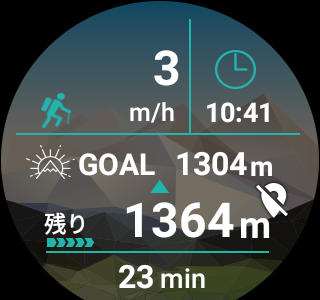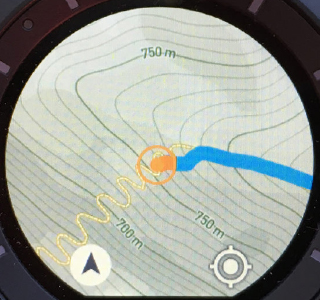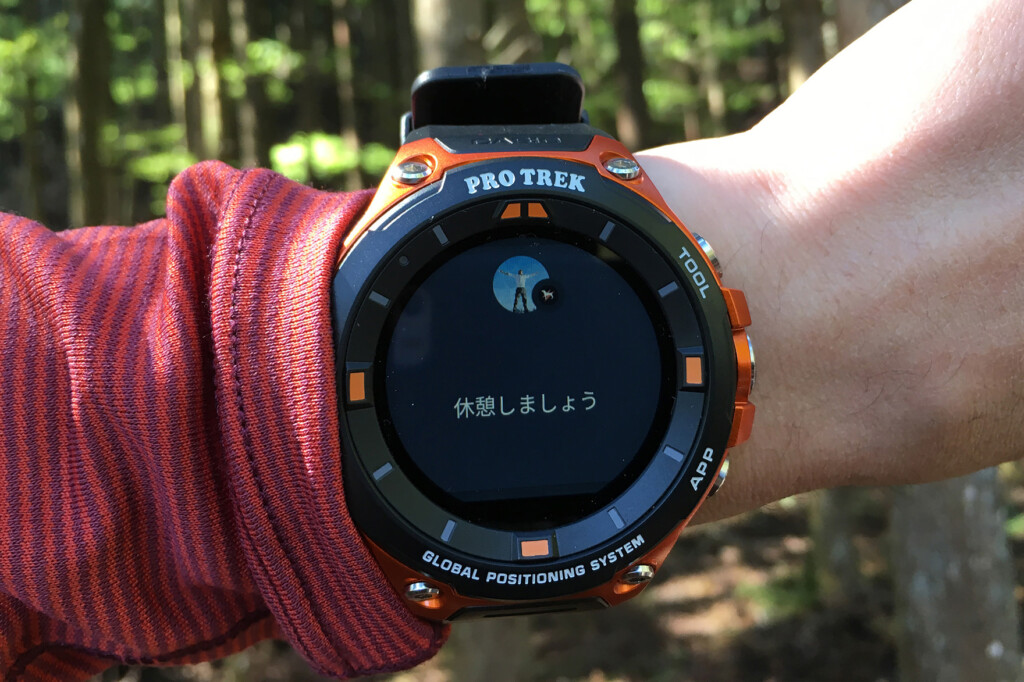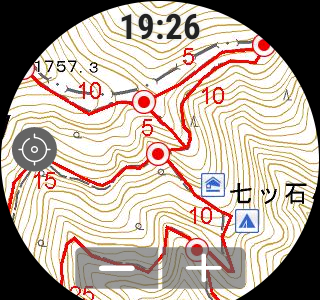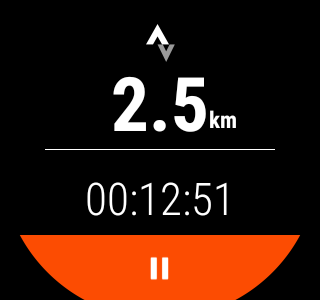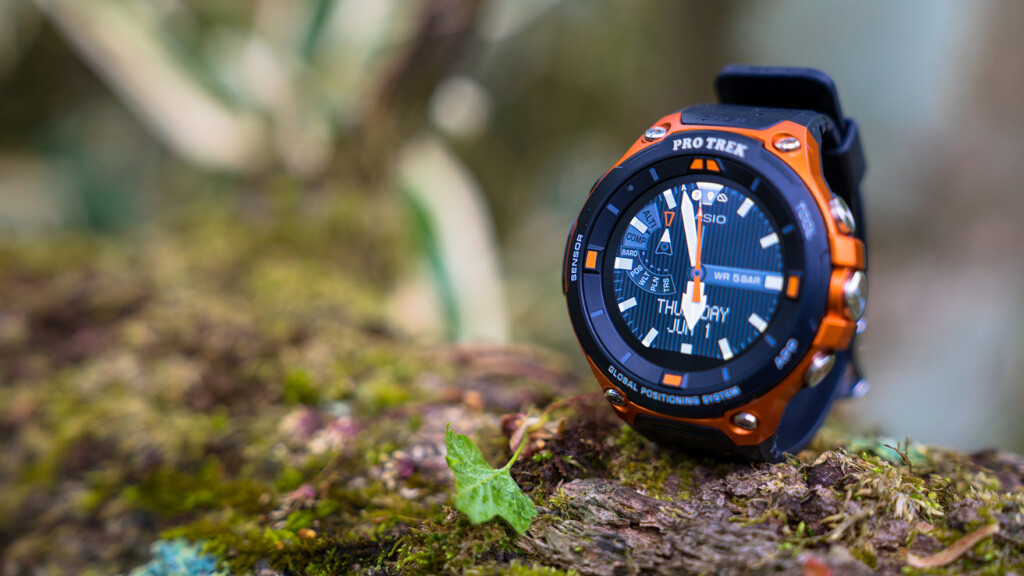
Review: Tips and tips for 100% outdoor use of the Casio PRO TREK Smart WSD-F20, you won't let go, even if you notice it.
It has been about a month since Casio's first PRO TREK, the GPS-built-in PRO TREK, was released.
As mentioned in the previous article, its performance and ease of use exceeded expectations, but as I continued to use it for trekking and everyday life, I became more and more attached to it, and at some point this new partner turned from just a simple hobby gadget to outdoor gear, which is essential for the field.
This time, I would like to revisit the appeal of outdoor smartwatches that have satisfied serious outdoor enthusiasts, and share some tips and tips on how to use them after trying out various ways to use them, mainly for trekking purposes.
table of contents
table of contents
- A review of the charms and features that I have experienced again after using it for a month
- Tips and tips for 100% using it when climbing
- Summary and hoping for the future (Page 2)
A review of the charms and features I've experienced again after using it for a month ( see the previous review for details )
Appearance and hardware
Here is a review of the hardware features and usability evaluations of the WSD-F20 from the previous review.
- More refined design
- It's stress-free weight for its size
- Simple button configuration
- MIL-STD-810G compliant, 5 atm water resistance, excellent durability at -10°C
- A two-layer structure of a 1.32-inch color TFT LCD + monochrome LCD that combines visibility and energy saving.
- A good sensitivity touch screen
- Battery life is at the same time, rechargeable battery made of lithium-ion batteries
In particular, it has been used in the rain for the past month or accidentally slammed it on the ground, but there are no particular problems, and even after using it over the past month, it has been confirmed that it has sufficient durability unless it is in very extreme conditions.
Features and software
As I used the functionality and software, I created an environment that suited me, and as a result, I was able to completely eliminate stress and waste of battery consumption. High satisfaction with the hardware makes Android Wear's high degree of freedom in setting up this way really reassuring.
- "Location Memory" full-color offline map using low-power GPS (Mapbox Inc. *Google Maps can also be used online)
- Easy access to compass, altimeter, barometer, sunrise sunset, tide graphs and activity graphs
- A convenient and cool original watch face
- Activity app, MOMENT SETTER+ activity measurement and notification function
- Highly flexible installation of Android Wear compatible apps made by Google and third-party
Tips and tips for 100% using it when climbing
As mentioned in my last review, even if Android Wear devices have excellent hardware and standard features, they do not mean that any user can enjoy them immediately without any stress. Unlike iPhones (Apple Watches), individuals can customize their own options to a certain extent, but in order to use them 100% more comfortably, you need to tune your hardware settings and apps you use in your own way.
So, from here on, we will look at the tips and key points, starting with the basic settings, including what settings and how to use the WSD-F20 comfortably when using it for mountain climbing or trekking.
Preparation for outdoor use of WSD-F20
First, let's look at the preparations required to use the map, activity meter, and progress notification function. This procedure is a must-read for your outdoor use as it is a path you will need to follow. For detailed instructions, please refer to the Casio support page.
Although it is not necessary at this time (June 8, 2017), the system itself may be updated in the future, so don't forget to check if the Android Wear system is up to date and update it if necessary.
- Set the Play Store to be available on your device
- Update your app to the latest version
- Set the location information for your device and smartphone
- Enabling "Privileges" for CASIO MOMENT SETTER+
- Turn "Save Daily Activity Records" on
- Start and complete the first tutorial that appears until the end
What's the best app to use while you're on the move, whether it's genuine or otherwise?
Perhaps the most troubling thing when mastering your Android Wear device is which app is best to use. Of course, if you just want to check the map and altitude, the included functions are sufficient, but if you're wearing a smartwatch, there's no reason not to use more advanced features such as understanding and notifying you of various situations, saving and sharing your activity history.
If it's an activity that has a lot of users, such as running, there are countless apps available, so it's honestly awkward to decide which one to choose. In comparison, there are a handy number of apps for mountain climbing, so it may be relatively easy to consider.
However, to be honest, as I'm still not making any decisive points like this, it's not easy to find an app that everyone recommends. After all, the only way to not regret knowing the strengths and weaknesses of each app is to choose the app that suits you.
Here we have picked out some of the most representative apps that make trekking more enjoyable and comfortable, and compared the characteristics of using them in various conditions, from everyday use to the field.
Candidate 1: Activity app (+Location Memory, MOMENT SETTER)
First, the original Casio outdoor app is included as standard on your device. Once you set the elevation that will be your goal and start measuring, it is convenient that you can immediately check the hour of the day, the altitude remaining to the goal, the elapsed time, and the trajectory you have walked on the map while you are on the action . The accuracy of the GPS trajectory can be adjusted using "Accuracy Priority/Battery Priority" which we will discuss later. Even if you prioritize the battery, it won't be that rough (photo below), so I think that's enough for a trekking speed.
In addition, when the activity app is running (measuring), Casio's original app, MOMENT SETTER, is keeping an eye on the activities and will automatically notify you at times such as "how many meters left until the finish line" or "how many hours have passed .
The good thing about this app is that it has the most efficient battery power at the moment . I will talk about this later, but I have found that if you keep the most number of times you view maps with the optimal settings, you can use it with confidence, so that you can use it for around 8 hours a day, leaving plenty of room left. It also works well (although it may be a little sluggish) , and is as expected from the fact that it is optimized for hardware. also happy that (although I haven't tried it) it is possible to set and display the movements not only for trekking but also for a wide range of activities, including cycling, fishing, paddle sports, and snow sports.
Automatic notifications when you are taking action using MOMENT SETTER are quite convenient. However, when I first started using it, I had fun setting notifications at various times, including remaining altitude, elapsed time, steps, and the prescribed climbing altitude, but in the end there was so much notification that I couldn't understand what timing it was and it made me feel even more confused. If you think about it, you can check the distance and altitude from other basic displays, so for now I have only settled on "notifications when pressure changes by 1hPa or more per hour" and "notifications when every 500kcal is consumed."
A major drawback is it is not possible to store or share behavior logs such as valuable measurements during actions and trajectories of walking on the Internet . It's fine if you don't run anything on your own, but it's fine if it can smoothly link to major social media services and apps. It's a shame that this is an easy-to-use app that makes use of the advantage of the genuine product.
Also, Mapbox's maps are clear and easy to read, and are responsive when offline, but that the amount of information used as a mountain climbing map is small compared to YAMAP , but personally I don't want the amount of detailed information from a watch, so I don't think it's a problem to use it in conjunction with a paper map.
Candidate 2: YAMAP
YAMAP, now a major Japanese mountaineering app, is a great product that allows you to download maps that contain information necessary for mountain climbing, such as mountain climbing routes, course times, water points, and mountain huts, for free, without restrictions, and use them even in places where radio waves are not reachable . It has been supported with the release of the WSD-F20, and I have been using it since the smartphone app, but this time I hoped it again with great expectations (I'm a free member, by the way).
The Geospatial Information Authority of Japan's paper topographic map-based maps that can be seen during action (full-color maps under the Premium Plan) are a little rough and difficult to see compared to Mapboxes, but they are not unbearable. Rather, it is extremely convenient and secure in that you can easily check paper climbing maps on a clock.
Another advantage of YAMAP is its social media functionality that allows you to save and share your activity records after your actions on your own page on your smartphone or PC , and share them with others. These records are valuable as your own mountain hiking records, but they are also useful when you use other people's records to make future plans.
Up to this point, it could be said to be an ideal app in a sense, but there are some things that you won't be happy about without having to go. One isIt's hard to say that the operation is stable. In my case,When in airplane mode to save energy, it often doesn't start when you wake up from sleep and launch the app.*. In addition, it takes time to update your current location. After using it slowly for about a year, I've had a few other unresponsive cases of unknown cause. I think there is some kind of cause for each and every time, but it's stressful to find a solution to these problems, restart it every time, or encounter such problems in an emergency.
Fortunately, looking at the message boards, it seems that they are friendly with their support, and there is a counter when you feel uneasy, so I think it's safe to say that in the end (this is different from the way that overseas product support such as Suunto is so thrilled...).
Another drawback is that if you want to manage a variety of activities, not just mountain climbing but also running, you will inevitably find this special feature, interface, and design (worldview) that is specialized for mountain climbing uncomfortable . This is unavoidable as it has evolved from social media for mountaineering, but when it comes to mountain climbing and training like myself, running is the one who wants to collect and analyze various detailed data later, and as a result, it is true that you will want to choose an app with a richer running management and sharing function. Furthermore, the tone and etiquette of the design that will motivate you are also an important factor.
*As of June 14th, 2016, the latest update seems to have almost completely resolved the issue of not booting properly when returning to sleep in airplane mode.
Candidate 3: STRAVA (+Location Memory)
So what I have come to and put into practice is to use STRAVA, an app that centrally allows you to record, analyze and share a wide range of sports and outdoor activities, from running to canoeing and skiing, and location memory (standard offline map). The only things that appear on this app are elapsed and traveled. This app is mostly just a record of GPS information. With this, the activity app with the various display and notification functions mentioned above and YAMAP, which has a rich map display, is more clear and convenient.
However, this app has the advantages that other apps lack, such as "vervanced" that supports a wide range of activities and devices, and "motivational power" that is detailed with data that is not inferior to Sunnto or Garmin's unique services, and ease of sharing among groups .
So I just have to launch this app almost to retrieve logs for later management, and to check my current location and trajectory I walk, I will start up and use the location memory each time. In a sense, it's a minimal function, but in reality, there are probably some people who don't check their walking speed multiple times while they are on the move, so many people probably think this is enough.
Moreover, if you use it in conjunction with the activity app, with the intention of a little battery consumption, you can create a comfortable environment with no gaps, from notifications and map functions during action to comprehensive analysis and social media functions after action .
In my case, I sometimes use Suunto or Garmin outdoor watches, and these watches have the ability to automatically upload the activity logs recorded on each of them to STRAVA , which is very helpful because they can centrally manage records on various devices on this app (SNS).
Tips for choosing an app with WSD-F20
- If you want to prioritize convenience and battery life while you are still in the process, we recommend the Activity app and MOMENT SETTER.
- If you want to always check a comprehensive map on your clock, such as a mountain climbing map, or use a community where many Japanese climbers gather, we recommend YAMAP.
- For those who want to use it on a variety of activity devices, analyze performance in detail, and feel safe with high degree of freedom, global standards, we recommend using STRAVA and location memory together.
| App | Activities (standard) | YAMAP | STRAVA (+Location Memory) |
|---|---|---|---|
| This is ◎ |
|
|
|
| This is △ |
|
|
|
| Map view | Maps of MAPBOX can be displayed offline (downloads must be done in advance). Furthermore, you can also choose the visuals of the map, such as "street, satellite, and outdoors." | Geospatial Information Authority of Japan's topographic map-based climbing maps can be used offline (the downloaded maps can be saved within the clock as much as the capacity allows). | The app itself does not have a map display function. |
| Recording and saving behavior logs | While you are on the move, you can check the hour of speed, time, remaining altitude to the goal, elapsed time, and trajectory on the map, but even after it is finished, the record cannot be saved. * | Various data during the course of action can be recorded and published and shared. | Various data during the course of action can be recorded and published and shared. |
| Notifications and announcements | A function is available to let the watch notify you when various conditions you have set are matched. | None in particular. | None in particular. |
| Activity history management and SNS functions | There is no function as it cannot be saved. | You can check and share saved activities on your PC or smartphone. The public scope can also be set individually. The paid plan also includes a function that allows other people to display the trajectory they have walked on a map. | You can check and share saved activities on your PC or smartphone. The public scope can also be set individually. Paid plans allow for more detailed data analysis and training plans to be designed. |
| Linking with other devices and apps | None in particular. | Trajectory data (GPX files) can be imported and exported. | Not only can you import and export trajectory data, but you can also automatically upload activities recorded on other devices such as Suunto and Garmin. |
| Battery consumption efficiency | ◎ | ◯ | ◯ |
*You can view it on Google Earth by exporting the KML file using the Location Memory app.
Next page: Go to the points of battery energy saving settings


